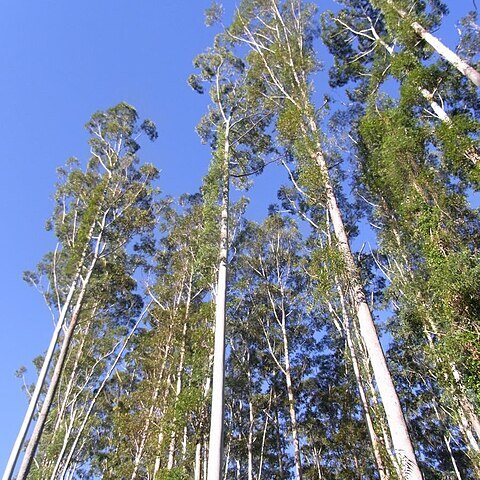Tree to 55 m. Bark smooth, white, grey-white or blue-grey, with some rough flaky bark at base up to 4 m. Juvenile leaves ovate. Adult leaves lanceolate; lamina 10–16 cm long, 2–3 cm wide; lateral veins conspicuous, at 40°–55°; intramarginal vein up to 1 mm from margin; petiole 15–20 mm long. Umbels 7–11-flowered; peduncle flattened, 8–18 mm long; pedicels angular, absent or to 3 mm long. Buds ovoid or broadly fusiform; operculum conical or slightly rostrate, 3–4 mm long, 4–5 mm wide; hypanthium obconical or campanulate, 3–4 mm long, 4–5 mm wide. Fruits subpyriform, 5–8 mm long, 4–7 mm wide; disc narrow, level or descending; valves 4 or 5, exserted, incurved.


